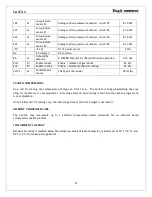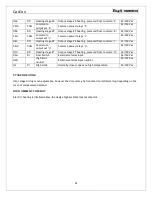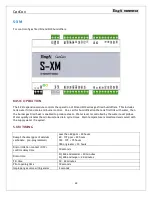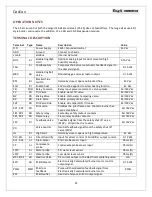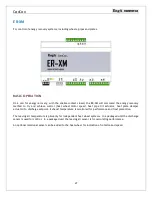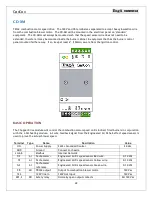
CenCon
55
Miscellaneous
COMBUSTION ANALYSIS
Indirect heaters should be annually checked for quality of combustion.
POOR PILOT SENSING
Check the condition of the pilot assembly. Check for damaged or dirty ceramics, and the condition of the
gasket. Ensure the pilot air tube is free of debris and blockages. Note that on DJ’s and DG’s there is an orifice
where the pilot gas line is connected to the pilot air tube. It must be free of dirt and burrs to operate properly.
Pilot pressure is between 3 – 5”wc.
REGULATOR RESPONSE
On some indoor units the vent orifice fitting on the RV appliance regulator is to be vented to atmosphere. The
field installed vent line must be sized in accordance with the requirements of the gas code in force.
Some DJ unit manifolds have RV appliance regulators with a vent-limiting orifice, usually a brass orifice marked
‘12A06’. Ensure that this tiny orifice is free of dirt or debris. A plugged orifice will impede regulators opening
flow and cause improper air/fuel mixtures.
WATER AND ICE FROM COMBUSTION
Water is one of the major products of combustion. As the flue temperature drops, and the efficiency
increases, the amount of water condensing to liquid will also increase. Extended chimneys can contribute to
condensation problems. Increasing the excess air is a method of reducing the amount of water condensate.
Increasing excess air by 1-2% will assist in keeping the flue gases drier.
MANIFOLD PRESSURE
Manifold pressure settings that the unit was tested and clocked at in the factory are recorded on the unit
rating plate. Any attempt to clock a unit in the field should be done with care. Corrections for density
(altitude
and station pressure)
, temperature, and the correction factor for the meter are often overlooked, thus leading
to an incorrect conclusion.
CUSTOMER INSTALLED SENSORS
If there is a temperature sensor to be installed in the discharge, that sensor must be mounted within ½ inch of
the Engineered Air sensor. BMS (Building Management System) discharge air temperature sensors should never
be used to reset the temperature of the heater. Only use space or room mounted sensors.
Humidity sensing should never sense discharge air. During normal operation the RH% will vary as the sensible
and latent temperatures change due to heating and cooling. Only use return air or room sensing for humidity
control.

